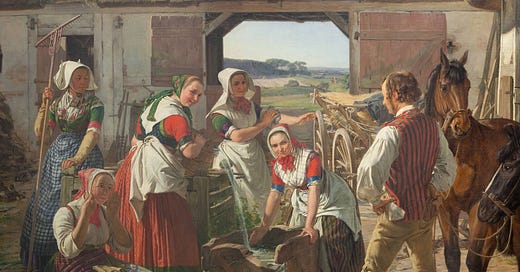This short post can be seen as a follow up, using a concrete example, on the earlier discussions of what constitutes the human scale as it relates to towns, cities, materials and technology.
First, a trick question. Imagine that you need to build a well in the courtyard of your new village farmstead home. Which well is more likely to be still around in 1,000 years time: a factory made cement ring well with a lifespan of 100 years, or a wooden board well with a lifespan of 25 years?
The answer, paradoxically, is the far shorter lived wooden well. The reason being is that when your great-great grandfather built the cement ring well he relied on a technological ecosystem for materials, confidence and skills that might not exist in your day. The likelihood that he taught your great-grandfather who taught your grandfather, who taught your father, who taught you, is relatively slim, especially since there was no pressing need to pass down or learn these skills. The well was there, let the people in the future worry about rebuilding it.
Progressive mindset: The problems of today will be solved by future generations.
Traditional mindset: The solutions of today should not impinge or hobble future generations.
The wooden well with its far shorter lifespan, a mere quarter. It will need replacing every 25 years. The likelihood that the skills, materials and tools needed will be passed down is very high. All that needs to happen is that your great-great grandfather asks his son to help replacing the well. Your great-grandfather will then in turn ask your grandfather, and so on, until one day when you are in your 20s, your father will ask you to help him rebuild the old well. You’d better learn too, because if you do not you will have to hire someone to do it for you. And who knows if you will be rich enough in 25 years to pay them?
For the sake of this discussion, how the manufacturing of the materials used for the two wells compare is less important. Both kind of wells can use materials that can be sourced and created by hand with simple tools or made from parts ordered online and delivered next week on site ready to assemble. The hole in the ground can be dug by machinery or over a series of weekends with a pick and a shovel. Naturally the machine made machine dug concrete well has an ecological footprint that is absolutely incomparable with that of a hand tooled hand dug wooden well, which is so environmentally sound that it is technically carbon negative.
What matters in this discussion is not purely the know-how of building wells, but how the knowledge of how to build can be sustained in the technological ecosystem of the builder and the community he is building in, over time. I call it social technology. I will write more about it in the future.



